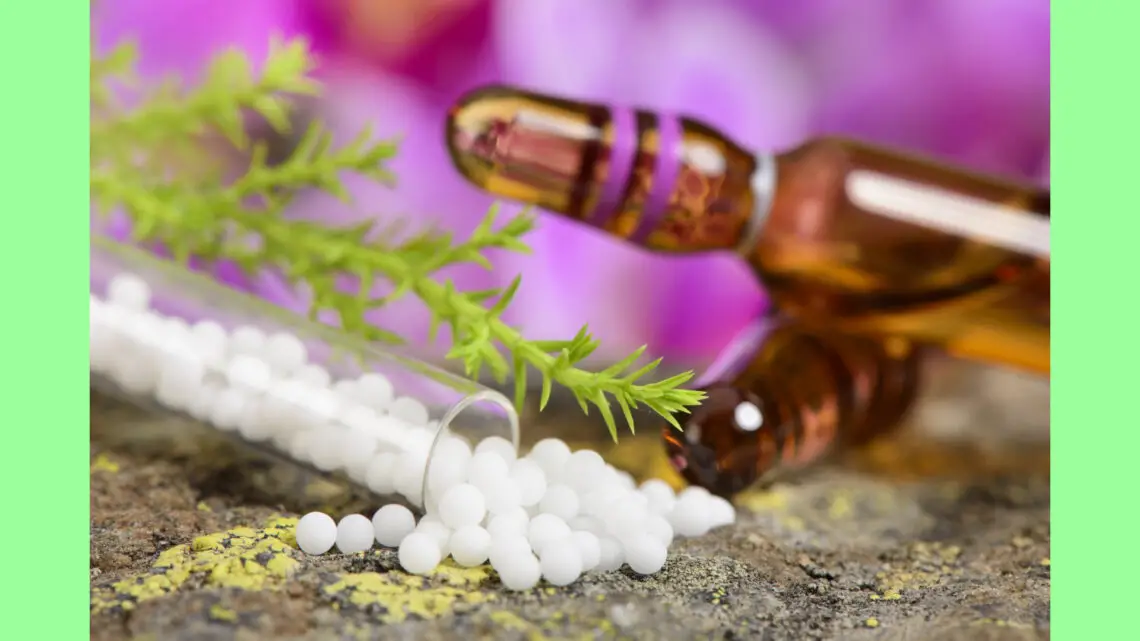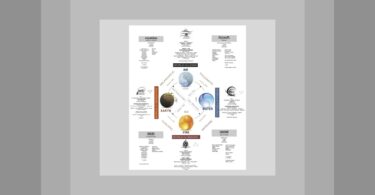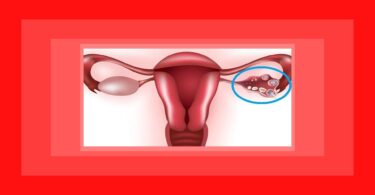In the homoeopathic Nosodes there exists the same remedial power, when properly indicated and given, as in any of our remedies. Secale is a vegetable Nosode, and we do not question its power; why should we, that of the newer ones? One factor, at least, in favor of our preparations over those used by the Allopath brethren, is, they do not create sepsis; neither are we introducing into the system crude toxins, which produce instant death, or arouse a diseased condition that requires years to eradicate—if it be possible to eradicate it in the lifetime. The honest prescribers admit the danger. I heard one of our scientists, who had been a student, and for years a co-worker, with Prof. Koch, say:
“Tuberculin should be used with great care. If it is used as a test in the advanced stage of the disease, it hastens the process, and death follows in a few weeks; and there is no telling how many we have sent into eternity. In the sensitively weak, we have terrible aggravations”.
Although they recognize these facts, they continue to use the test, experimenting similarly on the well and the sick. There can be no question in our minds, therefore, if this test is used for diagnostic purposes on a susceptible person who is tubercularly inclined, that it must arouse a practically dormant condition to activity, thus adding fuel to the smoldering embers; or, if a patient is suffering from the disease, there will be a pernicious aggravation. Another man says:
“Be exceedingly careful in forcing the opsonic index too high in a tubercular patient, as it exhausts him. If depression comes then, the opsonic index has been raised too high and you have an aggravation.”
Hahnemann said: “The physician’s highest and only mission is to restore the sick to health in a gentle and permanent manner;” (ORGANON § I) and herein we excel, without swinging the pendulum beyond its normal action. Our indicated remedies gently arouse the system to form its own antibodies as the serum-therapeutists term them, without more seriously disturbing the perverted vital force.
In some of our United States, the tuberculin test upon cows has been denounced, as unsatisfactory and harmful, and proved absolutely untrustworthy. Many times the animal has not responded to the test when known to have the disease; whereas, after killing the animal, by microscopic examination of the various tissues, it was found thoroughly infected. Percentages are given of 25-40 per cent that will react, and are condemned; when, in fact, they may have no infection, and are permanently injured by the inoculation. In one instance, sixteen out of sixty cows were condemned; and, upon examination, were found perfectly healthy. If these are the results upon animals, what must they be on the human family? These scientific investigators fail to give satisfactory reasons why this difference of action exists.
Are not the homoeopaths a century in advance of the so-called dominant school? Hahnemann explained these idiosyncrasies in sections 30-32 of THE ORGANON, and Dr. Kent, in Lectures on Hom. Phil., Chapters 14 and 16, explains clearly the reason; and all here realize that, on the one hand, it is susceptibility or oversensitiveness, and, on the other, a lack of it.
Our training in the fine diagnostic points is such that we are not obliged to resort to crude material means to determine the nature of the perverted vital force. After taking the case according to Hahnemann’s instructions, we add to the ordinary physical examination the examination of the hands, nails, hair, eyelashes, color of conjunctiva, and often the shape of the head. These are all contributing factors in substantiating our diagnosis, and no injurious results remain from this method. If the patient is young, constitutional treatment changes the entire economy, and the tendency to tuberculosis has been averted. If given in the early stage, our remedies frequently cure; and, in other cases, life is comfortably prolonged. We have fifty or more remedies to be thought of, and have performed wonderful cures.
TUBERCULINUM
In the treatment of tubercular cases, Tuberculinum may not, or may, be indicated. When suppurative processes have taken place in the lungs, much caution must be used in administering it, if required, as it may cause disastrous results. It is to be thought of when deposits begin in the apex of the lung, similiar to Phos., Sulph. and Therid. I know of no remedy that stands so high in severe dysmenorrhoea, when pains increase with the establishment of the flow, providing other symptoms agree.
Do not prescribe simply on a tubercular history, and do not repeat very often. (ORGANON § 245.) We are all familiar with the fact that symptoms cut no figure, with the Old School man, in selecting a remedy; so we find them prescribing calomel, quinine and tonics, and occasionally giving a test, to observe consequences.
VARIOLINUM
Consider for a moment the two methods of vaccinating, as this subject has lately been brought to your attention. Now is the time to demonstrate the value and superiority of internal vaccination (if I may so call it) by giving a dose of VARIOLINUM. In the United States, those who have used Variolinum find it as good a prophylactic as the crude method, and it is absolutely free from the sequellae of septic conditions, skin eruptions and tubercular infection.
This latter I have traced several times as a direct result after vaccination. I know of three cases of cancer resulting from it. In one woman, it appeared at the point of scarification. In another, a young woman of nineteen, one breast became malignant a few months after vaccination. In another woman, fearful results followed scarification on the thigh; finally, the glands became hard, sore, and, one after another, were removed, until those of the groin became involved, and the surgeon thought unwise to excise. The X-ray was applied with bad results, and the end came in a few months. So serious have been the consequences from vaccination that a few years ago the State of Iowa finally passed a bill in the Legislature to the effect that the homoeopathic internal vaccination be acknowledged and recognized as valid.
Does it not stand to reason that if a poison injected into the system is capable of so quickly and violently producing tetanus or septicaemia, causing death in a few hours or days (such cases occur every time we have a small-pox scare), that it must be capable of producing, more slowly, terrible chronic effects? There can be no doubt that vaccination by scarification is promoting rapid increase of cancer, tuberculosis and nervous diseases. They are not satisfied with a good small scar, but it must be a half-inch in diameter, as though the size of the scar regulated the immunity!
If it becomes necessary to immunize a patient, give a dose of Variolinum dry on the tongue, any potency from 2c to cm according to the susceptibility of the individual to the homoeopathic remedy. If the following symptoms manifest themselves in a few hours or days, he can be considered immune. I give the symptoms that have been reported by my patients:
In a very sensitive patient, you find, in a few hours, a general disturbance of the system, followed by headache, back and limbs aching, and great restlessness, rarely a fever. Then again, some have nausea and diarrhoea with prostration. In twenty-four hours, the conditions usually disappear and the patients feel perfectly well. In the less susceptible person, it may take four or five days to take effect. I always request that a report be made in a week’s time and, if there are no results, I repeat the dose; but this is seldom necessary.
I know of cases of small-pox that the attending physician permitted to remain in the home (two, in particular, where the families were large), and each member of the family was given a dose of VARIOLINUM 2c for several days, unless immediate effect appeared. The patient was quarantined in a remote part of the house, with the mother in charge, and no one contracted the disease. The patient received a dose of VARIOLINUM every hour for seven or eight hours, or until the fever and general symptoms were relieved. Result, a rapid recovery.
You have noted my frequent repetition of the dose in acute diseases, while in chronic we give only the single dose at long intervals. There seems to be no prescribed law as to the length of time for continuing a remedy, but in severe, acute sicknesses the system requires more, as the action is more quickly exhausted. (ORGANON §§ 246-248.) When the patient is under the influence of the remedy, noted by an abatement of pain, or a general improvement, it is time to discontinue and use Sac. Lac. in water, and continue with it as long as improvement continues. Many of us err, in both acute and chronic cases, in changing the remedy too soon, or repeating too often. (ORGANON § 245.) I cannot better advise for a clearer understanding in these points than, say, read carefully, side by side, THE ORGANON and Dr. Kent’s “Homoeopathic Philosophy.” Light will then fall on dark and obscure places, and you will see the science of Hahnemann’s principles.
PYROGEN
This, as you know, is a product of sepsis. It is a remedy that has long been in use with us, and the Old School has again appropriated our ideas, giving us no credit, and proclaiming to the world their wonderful, new, scientific, discovery, using this product in crude form. It has been used by us in septicaemia, sapraemia, from either surgical or puerperal infection, from sewer-gas infection, and sometimes in diphtheria and typhoid, when the system becomes thoroughly poisoned and death seems inevitable, when these symptoms present:
Tongue clean and fiery red, smooth, as though varnished; dry and cracked; Throat dry and articulation difficult; Intense restlessness, body feels sore and bruised, must move to find a comfortable spot to ease pain; Chill begins in back, between scapulae and is severe; Temperature rises rapidly to 103° or as high as 106°; pulse rapid and wiry 140-170, out of proportion to the temperature; Skin dry.
In these cases, PYROGEN works wonders. A woman with septicaemia had been given up by two Old School doctors, who said that nothing could be done and she would die in a few hours. I was called to the case, and was of the same opinion; but I found a perfect picture of PYROGEN. One powder PYROGEN cm was placed on her tongue, and placebo, in water, for her to take every hour for seven hours. If, at the expiration of this time, she did not feel improved, another powder was to be taken. If there was the slightest improvement, under no circumstances should she take the powder. Much to my surprise, the next morning she was better, and reported that in two hours after taking my medicine she felt a decided improvement.
These are the cases where we must move with the utmost caution and be patient. A repetition would either have spoiled the case or produced aggravations. Recovery was the final result.
ANTHRACINUM
When infection takes place from malignant ulcers, carbuncles or surgical wounds, with intense burning and stinging, and red streaks extend along the course of the lymphatic, a dose of this nosode quickly brings the rapid extension of the infection to an end.
DlPHTHERINUM
DIPHTHERINUM, or the Homoeopathic Antitoxin, both as a prophylactic and a remedy to be considered in dipththeria, shows its superiority over the ordinary commercial product, in that eczema, nervous complication, or weak heart after administration, do not follow as a result. The commercial product has become almost universally used by all schools, although we find many of the Old School and Eclectics who oppose its use, as well as the thorough homoeopath.
Not many years ago, the “Opsonic Index” was discovered and considered a potent factor in determining the degree of the recuperative powers of the patient. In a recent conversation with a leading scientist of the Allopathic school, speaking upon the value of the Opsonic Index, he said,
“The discoverer who had placed such value upon its use has practically discarded it as untrustworthy, as, upon repeated tests made at comparatively short intervals, it was found the index fluctuated too much to be depended upon scientifically”, and, personally, he, (the speaker,) considered it of little value.
Many of our school are placing much stress upon this test of the vital force or the resisting power. Hahnemann recognized that there is some unseen force acting within us in the system, and knew that this invisible force must be roused to perfect a cure; and also that, if this vital force maintains its normal condition, we are immune to deleterious influences. (ORGANON §§ 9-12.) Possibly, with the unique training of our school to investigate the finer points of the human economy, our scientists may be able to perfect the value of the Opsonic Index, but they must watch constantly lest they become materialists, as this is a tendency developing among those who do not value the potency, and they apparently think they must feel, see and smell, in order to accomplish results. Dr. W. J. Hawkes of Los Angeles, California ays:
“I heartily agree that the homoeopath must keep abreast with scientific progress. No matter what investigations are made, I am heartily in favor of our knowing it before the Old School; but it seems to me they have undertaken almost an impossible task in endeavoring to ascertain the action of drugs, and how they operate in producing the symptom. They must first learn what is life itself. This Opsonic Index is all right; it is going to prove Homoeopathy; but is there not a better way than the present method?
In a case of malaria under Old School treatment, it had become chronic; microscopical examination of the blood showed malarial germs; they had treated it with quinine. When the case came to me, after carefully studying, Natrum mur was administered. Three days later, chills ceased and, upon subsequent examination of the blood, no germs were found. What killed the germs? The indicated remedy raised the vital power of the individual so Nature herself killed the microbes.
It is absurd to inject or administer enough of any drug to kill those microbes already in the individual. The patient is apt to be the first victim, but if the indicated homoeopathic remedy removes the obstacles in Nature’s way, Nature, being free from encumbrance, does the work, kills the microbes by enabling the vital force of the body to destroy them, and no danger is done to the patient. “
Dr. Hawkes has aptly expressed the sentiments of the homoeopaths.
ANTITOXIN
Why do physicians use antitoxin? Because they know of no other means to raise the Opsonic Index and strengthen the organism to produce proper antibodies. Certainly, the percentage of deaths with the allo- pathic treatment has been less than before the introduction of antitoxin, but has it lessened ours? I think not, and a few statistics published in the Medical Gazette bear me out in my statement.

DIPTHERINUM
Many physicians who use DIPHTHERINUM as a prophylactic in the families of their diphtheria patients say they have not had a second case in one family, after administering it. In cases of strumous diathesis, when symptoms are mostly objective:
Weak, too prostrated to complain; Tonsils and palatine arches dark red, swollen, almost painless; Glands of neck much swollen; Membrane thick, dark gray or brownish black; Eyes dull and besotted; Marked debility; Temperature subnormal; pulse weak and rapid; or, Prostration profound since the beginning; Swallowing possible without pain, but fluids are vomited or returned through the nostrils;
DIPHTHERINUM is a most valuable remedy, in any potency to which the patient usually responds. If 200 or 1M is used, doses should be repeated frequently until results are evident. The remedy is also to be thought of in post-diphtheritic paralysis.
From: The Homoeopathician January, 1912 – A Journal For Pure Homoeopathy
Edited By James Tyler Kent, A.M., M.D., And Julia C. Loos, M,D., H.M.
Vol. I January, 1912 No. 1





My teacher, who is fortunately still alive, taught me that nosodes are too frequently administered nowadays, and often because homoeopaths have too little materia medica knowledge to administer the appropriate simillium. I think he has a point. I think of nosodes as reaction remedies, useful if the vital force is not showing a clear remedy picture. I guess homoeopaths will always prefer to blame the allopaths for their woes, rather than subjecting themselves to honest self appraisal